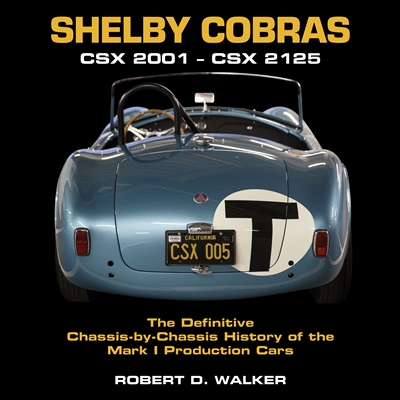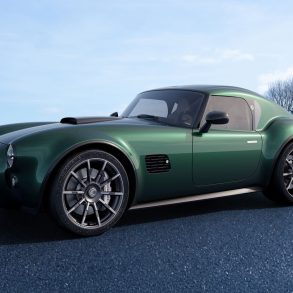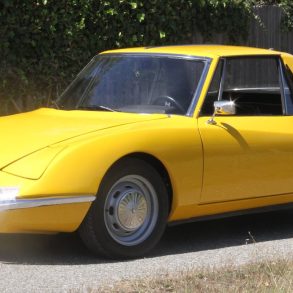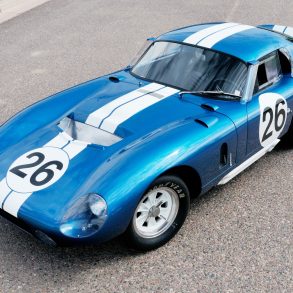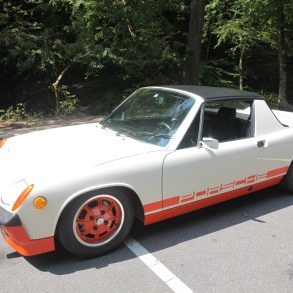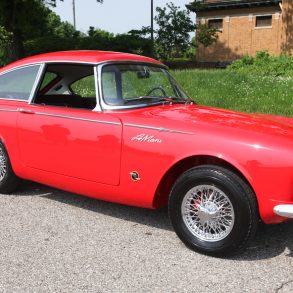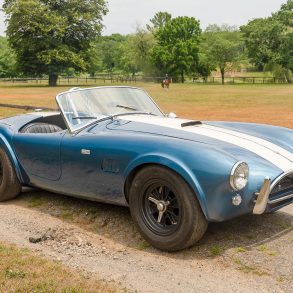Singer-songwriter Carol Connors once bet Carroll Shelby that if she wrote him a hit song, he’d give her a Cobra. Historian Bob Walker untangles the complicated tale of the 289 Cobra that Shelby gave her to honor that bet.
The original engine installed in CSX 2067 was reported by the first documented owner of record as having been a 260 HIPO, even though 289 HIPO engines were already beginning to be used for some Cobras by the early months of 1963. Several lower chassis numbered cars, including CSX 2025 and CSX 2044 (both completed out of sequence), as well as slightly higher VIN number cars (CSX 2074 and CSX 2075) were completed with 289 HIPOs. The date of completion of Mark I Cobras was actually the determining factor for using 289 HIPOs, not the chassis number.
Shelby Cobra CSX 2067 was originally invoiced to Downtown Ford at the corner of 7th Street and Wall Street in midtown Los Angeles, California, on March 6, 1963, for the standard Cobra dealer price of $4,995 plus an additional $548.65 for a heater ($72) and Class A accessories and racing equipment that consisted of AMCO windshield sun visors ($15.04), AMCO windshield wind wings ($13.97), #30560 Walpres chrome-plated mirrors ($14.58), chrome-plated exhaust tips ($4.25), Shelby teardrop chrome-plated hood latches $14.09, louvered hood $50, sway bars, front and rear $98.50, Goodyear Blue Streak tires $171.23 (upcharge), aluminum intake manifold $59.97 and Holley 4-barrel carburetor $35. The total cost to Downtown Ford was $5,543.63, accompanied with a whopping MSRP (Suggested Manufacturer’s Retail Price) of $6,717.28.
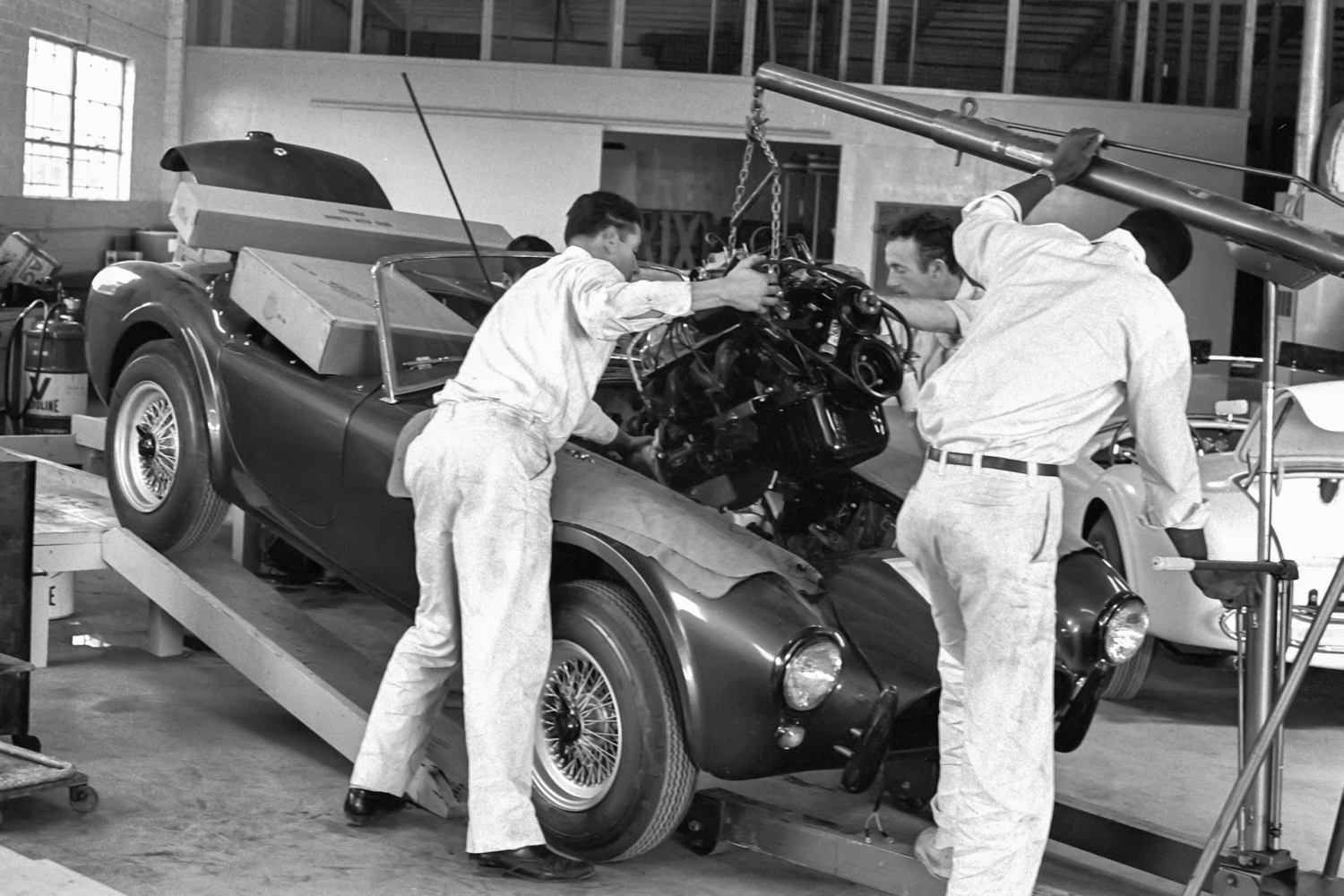
It is interesting to note that heaters were starting to become standard equipment by late 1962-early 1963 but were being charged for as an extra with different prices charged to different dealers. CSX 2065 was sold to Smith Motor Imports in San Antonio, Texas on March 8, 1963 with the heater listed at $62, while CSX 2055 was charged at $65 to European Cars on December 17, 1962 and CSX 2067 was sold to Downtown Ford four days later on December 21, 1962 with the heater priced at $72.
Downtown Ford may also have been gouged by Shelby American for the cost of louvers that were punched into the hood of CSX 2067 and two other Cobras, CSX 2049 and CSX 2058, that had been purchased by that dealership within a 40-day period. It is likely that all three cars had suffered body damage to their hoods during shipping aboard three different cargo carriers. Stevedores and ship’s crew members were notorious for having walked across the aluminum bodied Cobras that were tightly packed together in ship cargo holds, and insurance claims were numerous.
The punching of louvers, followed by hood repaint, was probably a creative method used by Shelby American Inc. to pass on the needed cost of paint and repairs to Downtown Ford, while disguised as a special Cobra feature.
A similar technique had been used on two Cobras that were repainted silver for no apparent reason at a cost of $200 each and then charged to Downtown Ford on invoices for CSX 2045 and CSX 2046 during January 1963. Most likely those two cars had also sustained body damage during shipping. It is no coincidence that all five Cobras purchased with those billing irregularities were invoiced to Downtown Ford over a two-month time period from January 26 through March 6, 1963. No other Shelby American dealership was ever charged for or received Mark I Cobras with hood louvers. Also, no other dealer was ever charged for the repaint of a Mark I Cobra at the time of completion. It appears that Shelby American had found a unique niche with Downtown Ford.
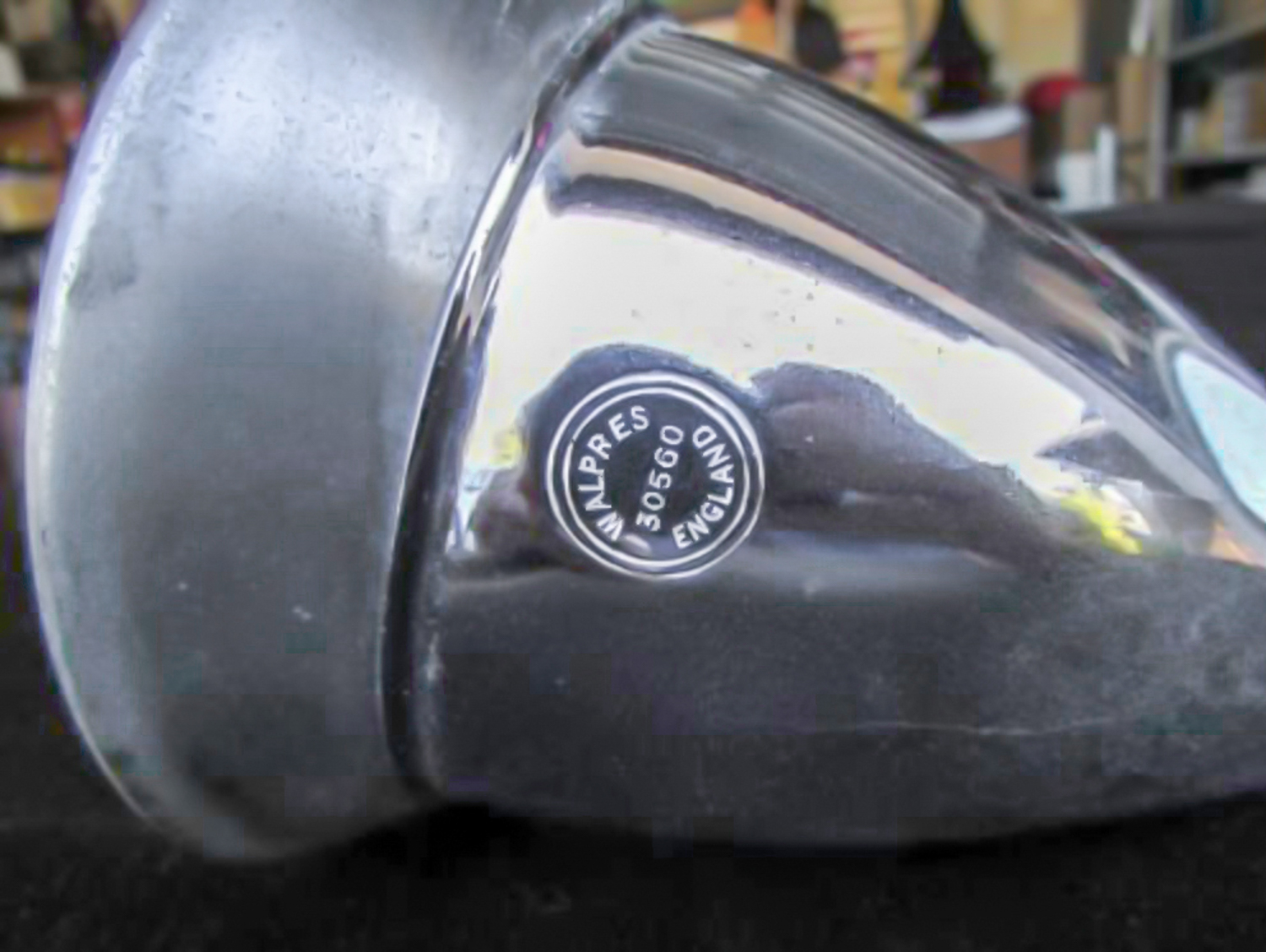
CSX 2067’s combination of street driving accessories mixed with racing equipment appears to be somewhat unusual. For road racing competition a 289 HIPO engine, roll bar, Raydot spun aluminum mirrors, with the option of Weber carburetors with hood scoop would probably have been a better combination of accessories. Walpres fender mirrors had been specified for several early Mark I Cobras and were first used as an accessory on CSX 2018 that had been a special ordered Cobra for Henry Ford II. Walpres mirrors were a premium cost accessory, but similar to the standard Talbot Junior and Senior mirrors.
Hood louvers are documented as having only been used on seven Mark I Cobras: CSX 2002, CSX 2004, CSX 2009, CSX 2010, CSX 2049, CSX 2058 and CSX 2067. Shelby American soon abandoned the use of punched louvers on later competition Cobra hoods, in favor of hood scoops that provided a better volume of air flow and were generally used to increase the vertical clearance for Weber carburetor velocity stacks.
Five months later and unsold at Downtown Ford, CSX 2067 was re-invoiced by Shelby American Inc. to Ford Special Vehicles and Racing Director, Jacque Passino, in Dearborn, Michigan on September 30, 1963 at the new wholesale cost of $5,769, which was $225.37 more than the original invoice cost to Downtown Ford. Thirty days later, on October 31, 1963 Passino issued a credit memo that canceled the previous invoice, followed by an apparent and complete financial write-off of the vehicle.
The Ford Motor Company had established a reciprocal agreement (a revolving door policy) with Downtown Ford for the buy-back or exchange of Cobras. When the inventory level became low at Shelby American Inc., Cobras failing to be sold in a timely manner at Downtown Ford were occasionally retrieved, especially when they were needed for special assignments, redistribution to special people or sale to other dealers. Several Cobras are documented as having been bought back from Downtown Ford during the mid-1960s. In this case, CSX 2067 failed to have been sold through that dealership, probably because of the high retail price for the unusual combination of extras.
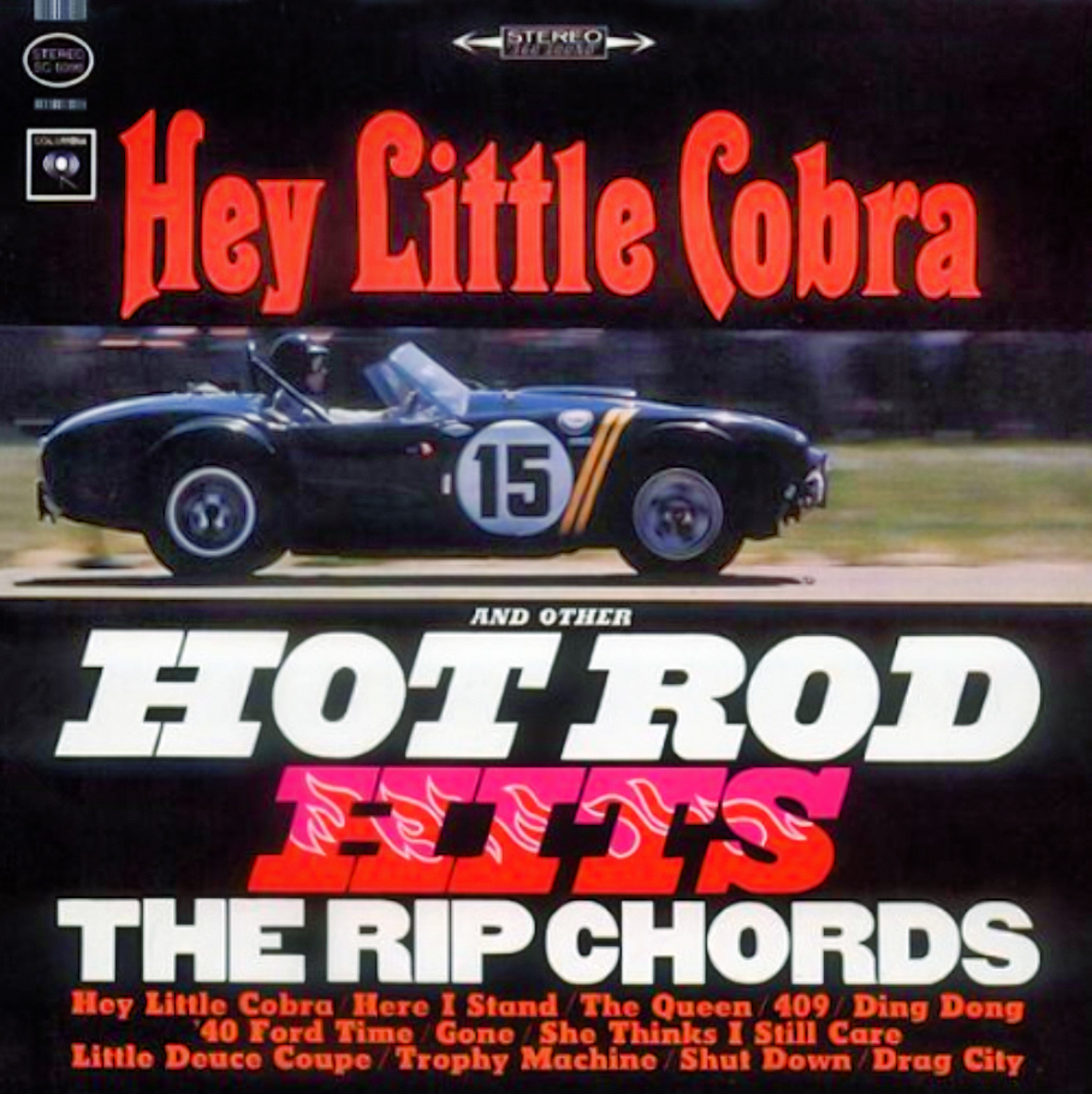
CSX 2067 was reacquired through Ford management and Shelby American Inc. for a special presentation and given by Shelby to 22-year-old Annette Kleinbard on August 28, 1963. She was a popular singer-song writer who went by the stage name, Carol Connors. Information in SAAC Registries that “2067 was sold on 8/30/63 to Gail Kleinbard (Sherman Oaks, CA)” is wrong. During the author’s interview with Connors during November 2017 she explained: “Gail was my mother and CSX 2067 was not sold to her but given to me (Carol) as a reward for having written the hit song, ‘Hey Little Cobra’.” That song was recorded by The Rip Chords, a vocal group comprised of singers Jan and Dean, as well as Brian Wilson and Bruce Johnson of the Beach Boys. Connors is perhaps best remembered for her 1958 recording, To Know Him Is to Love Him, which was written by her friend and fellow “Teddy Bears” singer, 19-year-old Phil Spector. Connors was the lead singer of that group.
In later years, Spector went on to become a successful record producer and songwriter. During the late 1960s Spector purchased the prototype Cobra Daytona Coupe as a used car for $7,500 and campaigned CSX 2287 as a daily driver through the streets of Southern California while accumulating a sizeable collection of speeding and reckless driving tickets. Nearly 40 years later, Spector was convicted in 2008 for the 2003 second degree murder of actress Lana Clarkson at his Hollywood home and was sentenced to 19 years to life at Corcoran State Prison in California.
Apparently, the original Shelby American Inc. paperwork that was issued to Connors, in August 1963, for CSX 2067 mistakenly used the VIN number CSX 2024 and caused the California DMV to temporarily delay the registration of that Cobra to Carol Connors, in the name of her mother, Gail Kleinbard. CSX 2067 was issued the temporary paper license tag, 0387485. That incorrect VIN number (CSX 2024) belonged to a Cobra that had been completed by European Cars in Pittsburgh, Pennsylvania during the fall weeks of 1962 and had been distributed by Ed Hugus to Tasca Ford in Providence, Rhode Island on November 30, 1962.
CSX 2024 had been returned to Shelby American Inc. in Venice, California almost a full year later by Tasca Ford for some unknown mechanical issue in 1963 and the car was being stored in the Shelby American Inc. shop at the same time as CSX 2067. Five months after Connors received Cobra CSX 2067, her California DMV registration recorded in her mother’s name had been corrected and Kleinbard’s Cobra was issued the 1963 gold numbers and letters on black 1963 issued California license plates, ASL 092.
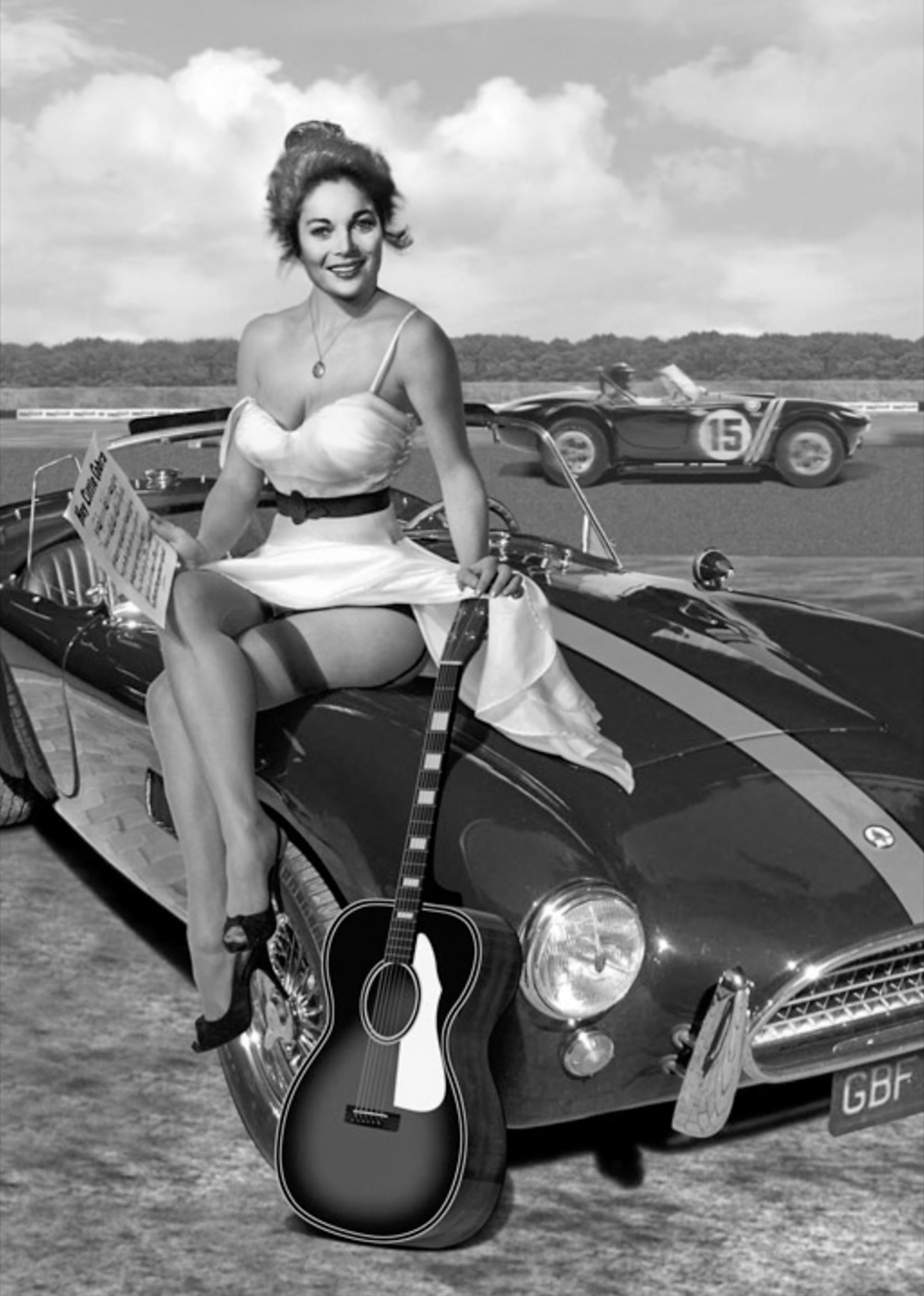
Connors was 22 years old in August 1963 (born November 13, 1940) when she received CSX 2067. She elected to have the Cobra registered in her mother’s name, not because of age, but because of a serious automobile accident that she had experienced years earlier and she anticipated the likelihood of expensive insurance to a young driver with a prior totaled car and a major medical claim.
During an interview with the author in 2017 Connors stated: “I met Carroll Shelby (several years) after I had broken up with the King of Rock and Roll, Elvis Presley… It was during the late summer of 1963 and because of my (new) boyfriend. He read in the newspaper about Cobras… AC built cars, being built in Venice, California by a young man named Carroll Shelby… that were being powered by Ford Motors.” Her boyfriend said, “Carol why don’t you go out there and talk to Carroll Shelby and see if he can put a Cobra front on a Bristol back.” (Connors had also recently wrecked her boyfriend’s AC Bristol).
Connors recalled: “I went there in little ‘hip-huggers and a crop top’. He knew I sang the song, ‘To Know Him Is to Love Him’. So, there I am in his office… I went in and I said, ‘Mr. Shelby, I cracked-up my friend’s car’… I did not say boyfriend, just friend… ‘and it’s an AC Bristol. Is there any way you could put a Cobra front on a Bristol back?’ Well, he became hysterical. He just could not stop laughing… and said, I can’t do that little girl, but if you write me a Cobra song that’s a hit, I’ll give you a Cobra and take you to Le Mans.”
Connors took Shelby at his word. She went home and rather quickly wrote the song, Hey Little Cobra, which was eventually recorded by The Rip Chords, hitting the Top 10 chart on “Billboard’s for six weeks and stayed on the top 100 chart for 14 weeks.” Connors said that she was nervous after she wrote the song, explaining: “I played it for the first time in public (on the piano) in the home of (automotive publishing magnate and auto museum founder) Robert E. Petersen and his wife Margie. The Petersens were (my) friends through SCUBA diving and social contacts. They were my best friends.” They were also a friendly audience and the song was well received.
She was also just as nervous when she first played the song for Carroll Shelby. She then showed her song to Doris Day’s son, Terry Melcher, who ended up producing the record with his partner, Bruce Johnson, who then became one of the recording singers. Soon after the record was released, Connors remembered her first meeting with one of the other recording singers, Beach Boy Brian Wilson. “He never forgave me for writing that song. It was an ‘all-boys club’ and he was very critical of my song when he first read the lyrics and was surprised when the record became a hit! Brian said, ‘We knew that song was written by a girl.’ I said, Brian, how did you know that? Almost spitting out the words, he said, ‘I knew it must have been written by a girl! That line, ‘I took my Cobra out of gear and let it coast to the line’ isn’t right. Nobody takes the car out of gear and just coasts to the line.”
Previous accounts in Shelby American Automobile Club (SAAC) documents that: “Connors ran off the road in CSX 2067 in Los Angeles’ Laurel Canyon, suffering injuries to her face from the broken windshield and destroying 2067” are incorrect. So is the information: “The Cobra was scrapped.” (Hopefully that second bit of misinformation has not encouraged the construction of duplicate “air cars.”)
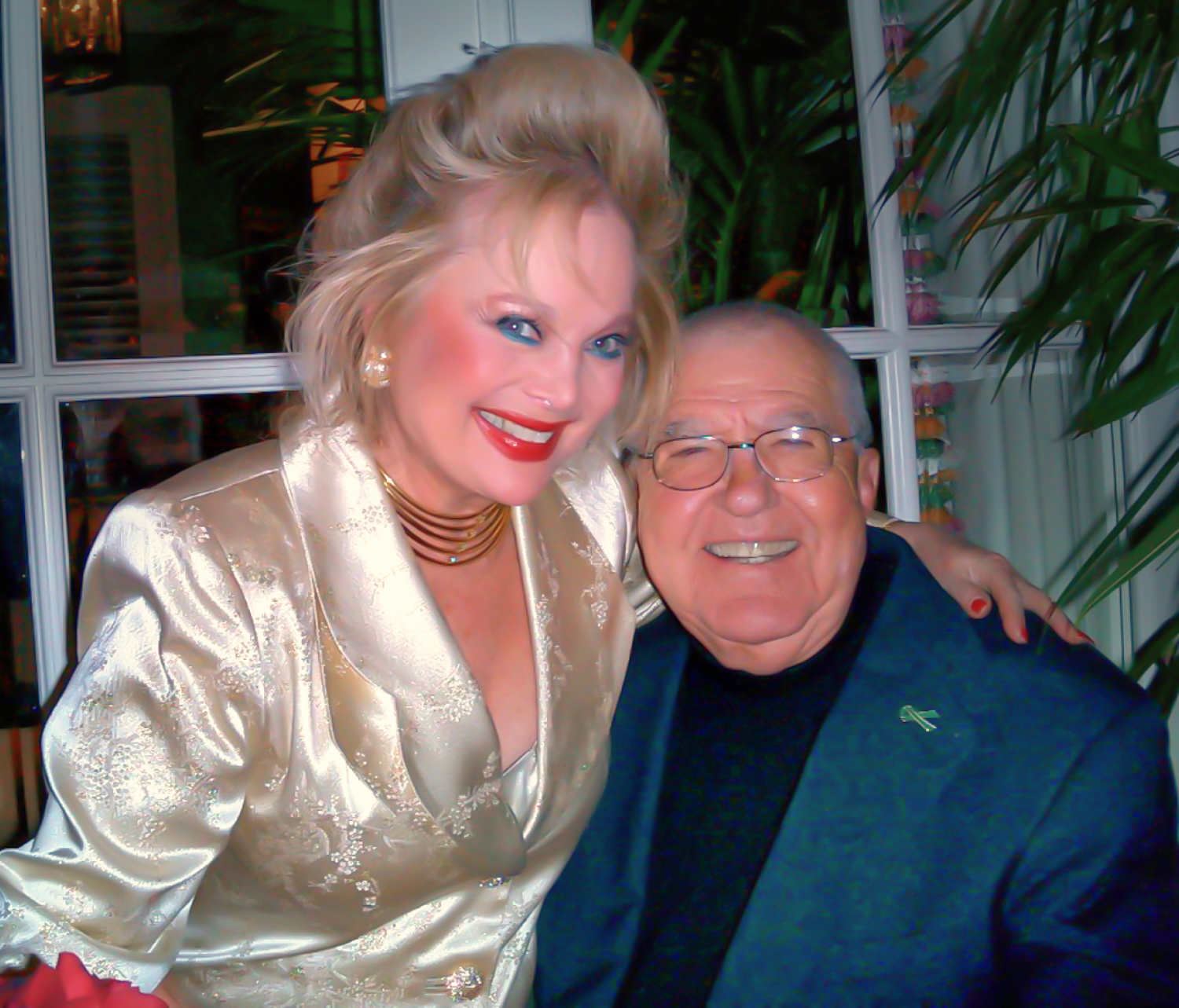
According to Connors, she did have a serious accident, but: “…it happened several years earlier (late 1950s) in my white MGA roadster and I went down a 350-foot cliff and hit a tree. I had used a chunk of my earnings from ‘To Know Him Is to Love Him’, to buy that MG. That (accident) was at Coldwater Canyon Lane at Mulholland Drive in Beverly Hills,” which is a full three miles away from Laurel Canyon.
That accident was serious. She received multiple injuries and sustained many facial cuts from the broken windshield, which resulted in four surgeries and a long recovery. Not only was CSX 2067 not destroyed by her, but Connors’ Cobra (CSX 2067) survived her ownership and probably still exists today, although there is no reference to the car’s existence or current ownership listed in either the 2008 World Registry of Cobras & GT40s or the 2019 SAAC Leaf Spring Cobra Registry. SAAC still believes that CSX 2067 was destroyed!
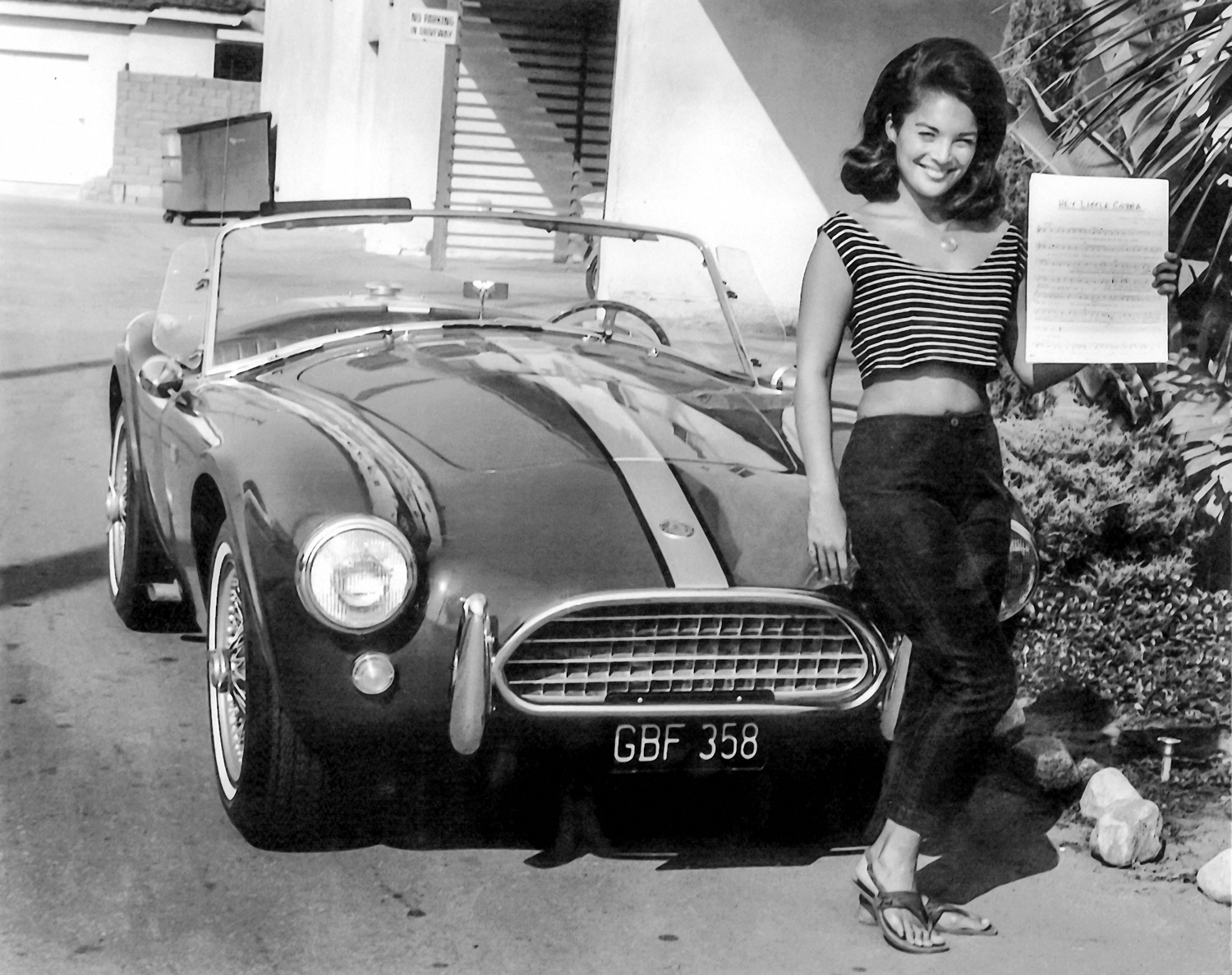
Connors also stated: “I was given three Cobras (by Shelby).” CSX 2067 was the first Cobra, followed by a second Cobra with an unknown chassis number and then CSX 2544. Connors explained: “My 260 Cobra (CSX 2067) had lots of problems. It was plagued with lots of little glitches. When I told Carroll about it, he took the car back”, but there is no documented history for CSX 2067 surviving past Connors ownership of the car in 1964! A photograph of Connors holding the song “Hey Little Cobra” and standing in front of CSX 2067 shows that her first car had a narrow racing stripe running down the center of the hood and nose, flat head Cobra badges, Wilmot Breeden Budget Lock T-handle hood latches, hood louvers and two Walpres fender mirrors.
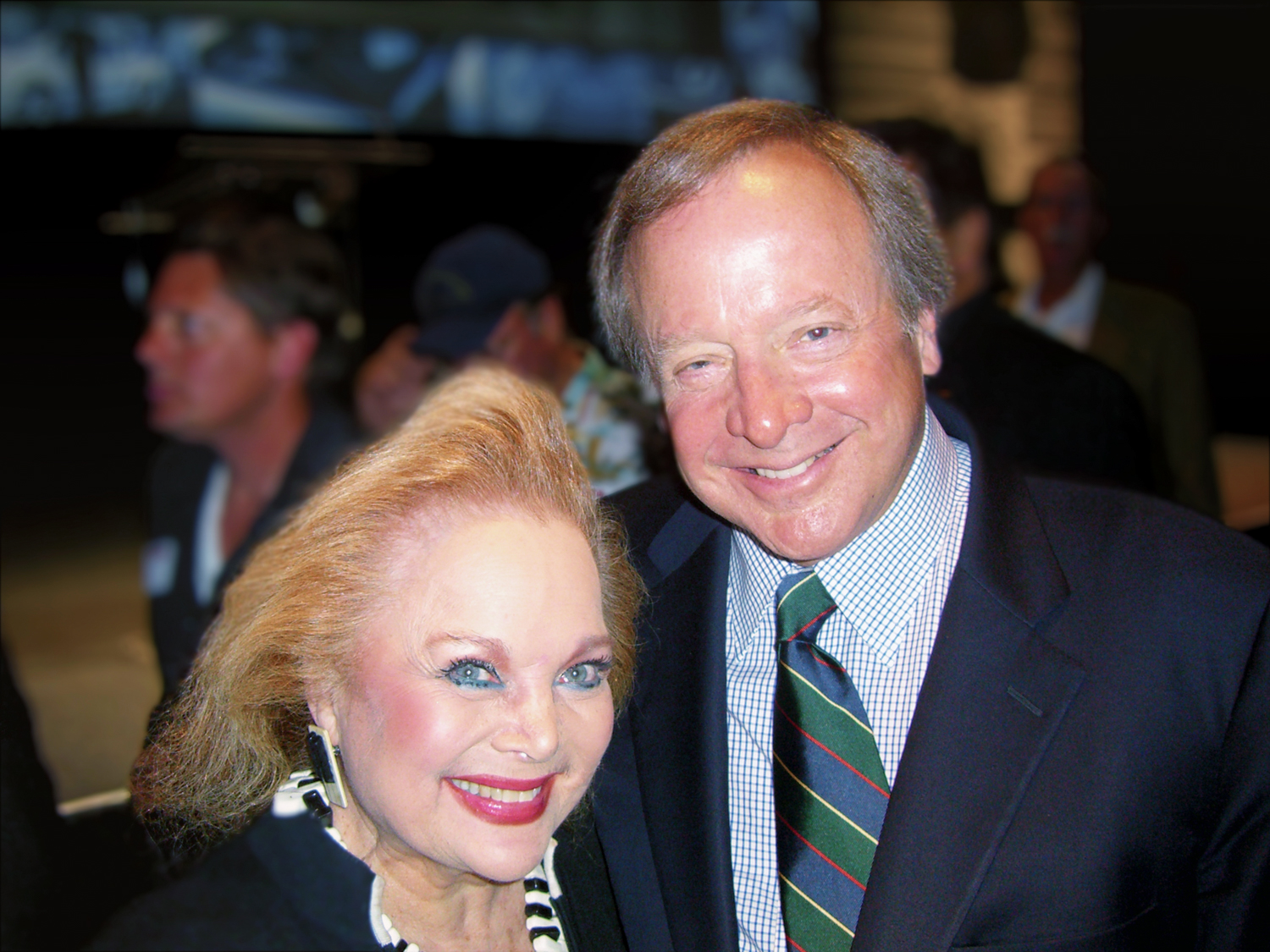
Connors used that replacement (289) Cobra with the unknown chassis number for several months, until one day: “…when my sister Cheryl, bless her little pointed head, was driving the Cobra and it overheated. She had driven it on Coldwater Canyon Lane, and she forgot to put water in it (the radiator). It was a hot day and when she got to our house… we were living at my parents’ house at 13141 Oxnard Street (in Van Nuys)… she came running in and said, ‘the engine won’t shut-off’. It was hot from lack of water and it was making all kinds of funny noises. The engine was detonating… so I called Carroll saying, ‘the car won’t shut off’ and he said, ‘just let it cool down’…I think I cracked the engine block.”
Connors also returned that second Cobra (probably with a cracked block) to Shelby American Inc. after only a few months of use and Shelby then gave her a third Cobra in early 1965. That second and unidentified Cobra with a 289 HIPO that Shelby gave to Connors was likely another used showroom demonstrator and it remains in existence today, although there is no history of that unidentified leaf spring Cobra as having been previously owned by Connors.
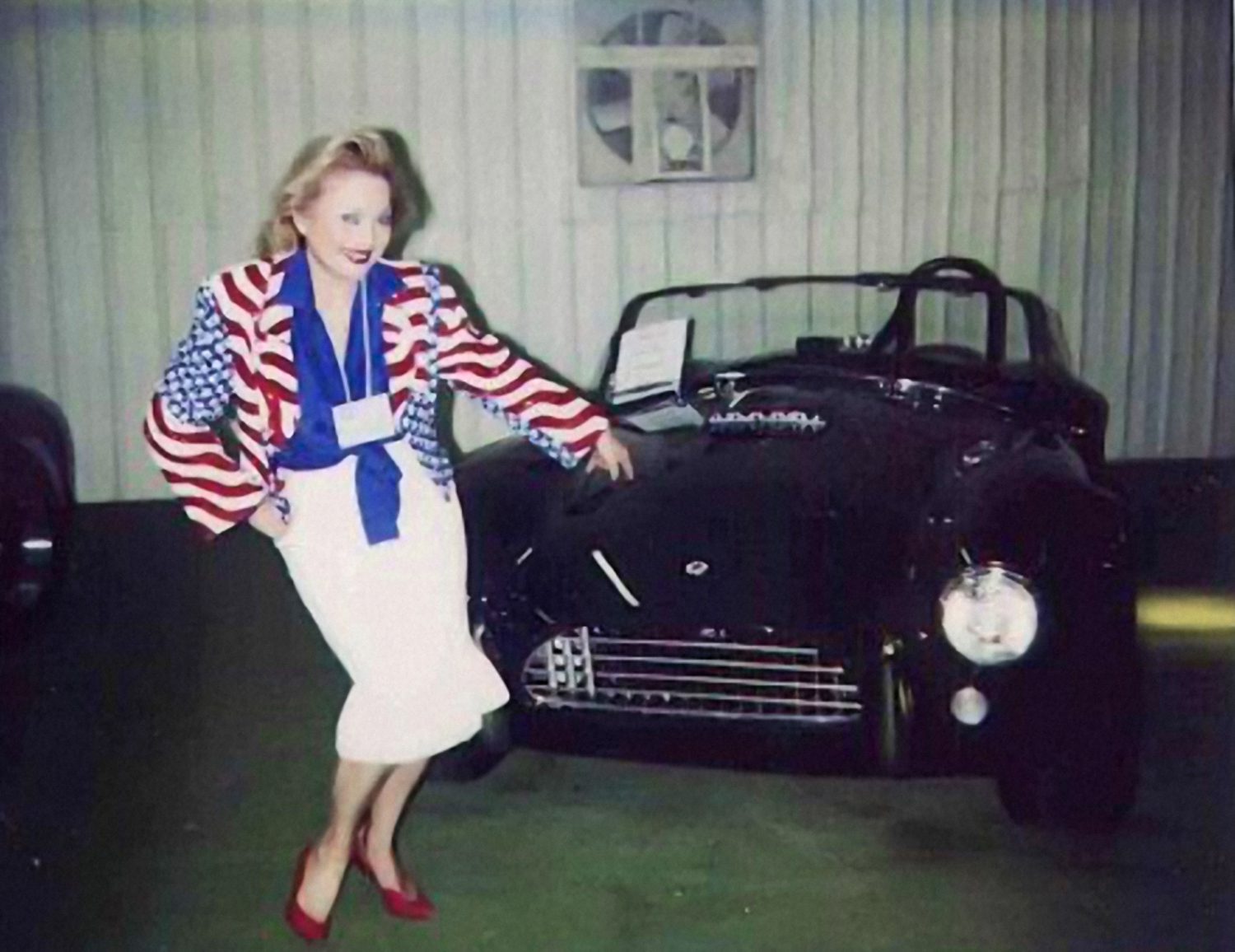
The third and last Cobra given to Connors was a Mark II, CSX 2544 that had been sold new to the Philadelphia, Pennsylvania dealership, Alvin A. Swenson, Inc. at 3910 Kensington Avenue, but remained unsold at retail. It was then returned-back to Shelby American Inc. for redistribution. That dealership had the Shelby Leaf Spring Cobra Dealer Code number 160. While being transported to a second dealership, Hulbert-Stauffacher in Racine, Wisconsin that had just purchased it, CSX 2544 sustained major damage. Shelby American Inc. submitted an insurance report in July 1965 stating: “…at a rough rail crossing the hold-down chains broke. The car plunged backwards through the van rear door onto the road bed and was severely damaged.”
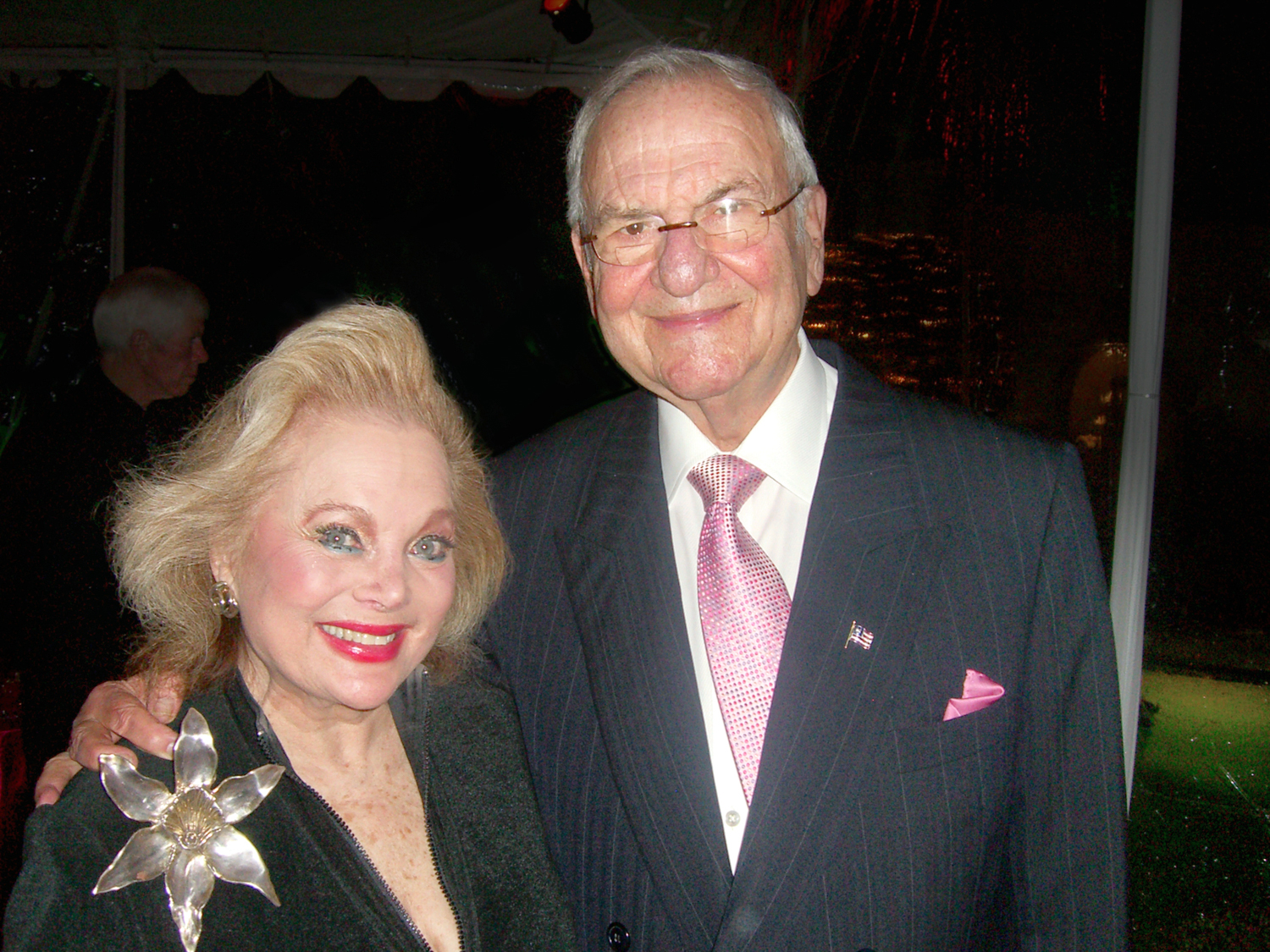
Following that accident, CSX 2544 was transported to Shelby American Inc. in California for repairs, rebuilt and then given to Connors. She registered it with the 1963 series gold numbers and letters on black California license plates, TQU 328. Connors stated: “Carroll offered me the choice of either that (second) 289 or one of the new 427s. I remember that he told me that the 289 had a ‘high rise’ manifold.” Connors chose the 289 after being given a demonstration ride in one of the showroom demo 427 Cobras driven on the 405 Freeway by Ken Miles. When they returned, Connors told Shelby, “The car hit 80 (MPH) in first gear! Shelby said, ‘It will do 100 in first gear’.”
In addition to having been given three Cobras by Shelby, Connors told the author: “Shelby showed me how to drive a Cobra when the song became a smash (hit) and he took me to Le Mans in ’64. After the 24-hour race, Carroll was driving through the mountains (in France or Italy) and I was freaking out…I said, Carroll please slow down, but Carroll said, ‘I know what I am doing’…I was a race car driver! I said but I’m the one who went off the cliff!” (in a white MG).
Connors describes her favorite story from that European trip. After the Le Mans race “We went to Modena and Maranello, Italy with our entourage of friends. We walked into the Ristorante Cavallino, across the street from the Ferrari factory. It was Carroll, myself, Bernard Cahier (French Grand Prix photographer and journalist) and his wife, Joani…I think Lee Iacocca was there also…and it was like the ‘Gunfight at the OK Corral meets A Fistful of Dollars. Being a song writer, I can hear the music playing in the background! Enzo Ferrari was there…he had his back to the wall…ok…and Shelby says, ‘Enzo I’m gonna beat the pants off you at Le Mans next year’…AND HE DID!”
Although CSX 2067 was not wrecked and “scrapped” by Connor in 1963-1964 as stated by SAAC, no current information is available as to any subsequent owners of that Cobra or the transfer of the car’s title from Shelby American since her ownership.




